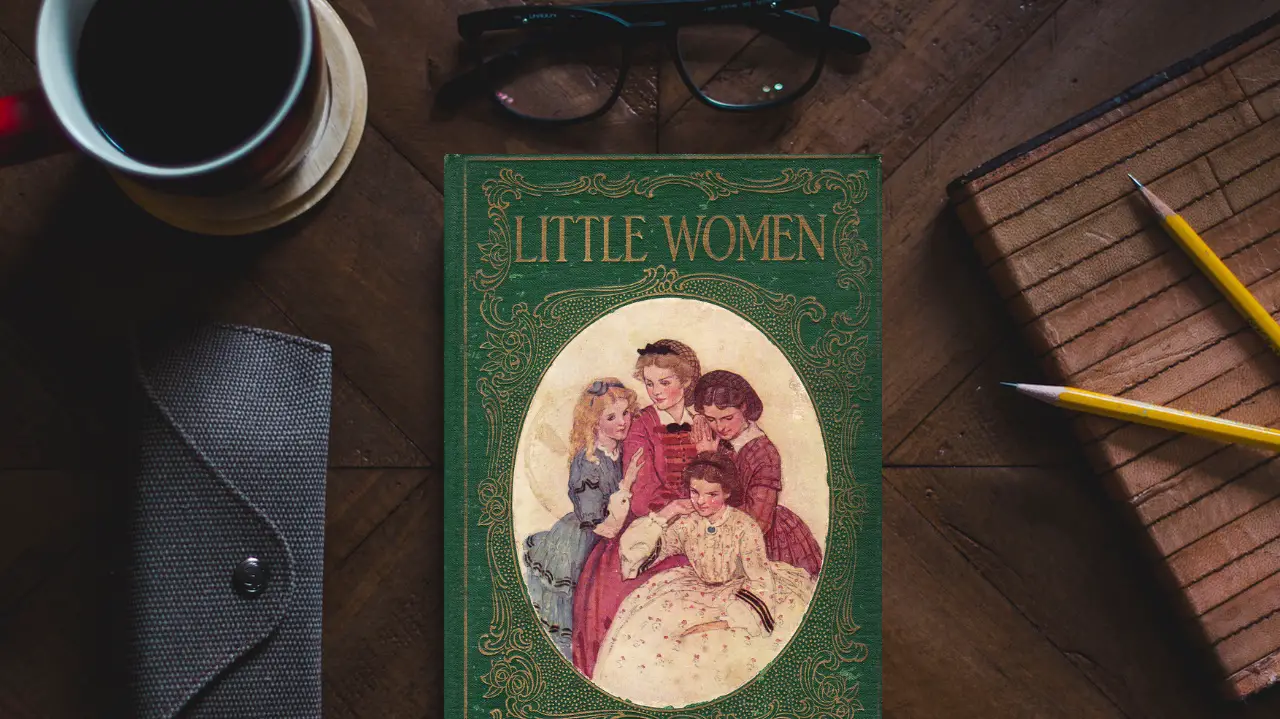“Write a book for girls,” Louisa May Alcott’s publisher once told her. By writing what she knew and basing the story off her family, Alcott managed to create something amazing. Generations later, through the book, multiple movie adaptations, and even a musical, the four heroines still live on and are beloved by all who read Little Women.
Little Women is set during the Civil War, and the story focuses on four sisters who struggle with living in poverty while their father is away fighting. The plot line may tend to move slowly as Alcott dwells on daily life, family, and relationships, but this is the reason the story has been beloved for so long.
Alcott concentrates on character instead of plot, highlighting the personalities and traits of each character.
As the oldest, Meg strives for order and often has a motherly tenderness. Jo, which is short for Josephine, is based on Alcott herself. She is not quite ladylike and is considered tomboyish by her sisters. She tries her best as a writer and has a passion for travel. Beth, the second youngest, is very shy but displays a humble, quiet, and nurturing spirit. The youngest is Amy, “a most important person in the world—in her own opinion at least,” as Alcott states on page eight of the book. She carries herself like a lady and is a talented artist. The four sisters, each very different in their own way, create such natural dialogue and dynamics throughout the story that Alcott must have recorded actual conversations with her own sisters.
Overall, the characterization that Alcott brings to life in her stories is one to which authors should aspire. Each character has her strengths and weaknesses, but faults are what makes a character most relatable. Often, authors try to force characters into being relatable without giving them faults and personal struggles of their own. In Little Women, Meg struggles with vanity, Jo constantly combats her hot temper and pride, Beth must learn to conquer her shyness, and Amy battles her arrogance and vanity.
Throughout the story we see how the sisters struggle in each of these areas, and how they learn and grow because of it. As sinful humans, it is natural to struggle and fall nearly every day of our lives, so connecting to a one-dimensional, Mr. Perfect or Miss Spiritual type of character does not happen as the authors intended. Hence Alcott is a good example to writers. The best way to learn how to write well is to observe and read the books of authors who have successfully written books free from character flaws, weak writing, and clichéd plots.
Though I am sure many of you have read or seen an adaptation of Little Women (and if you have not, here is your chance), I encourage you to read (or reread) this story through a writer’s perspective and analyze the characterization that Alcott brings to it.


Yessss… this one’s a classic. The characterization she did really was amazing.
Definitely a classic you can reread several times, it never gets old. 🙂
Yes! Little Women is one of my favorite books. I like the way it focuses on characters and relationships, instead of just rushing through the plot.
Little Women is also one of my favorites. 🙂 Thanks for reading Sarah.
Awesome review, Christi! Love this book.
Fun fact: I’m actually related to Louisa May Alcott. My younger brother’s middle name is Alcott. 😀
That’s awesome Greta!
Wait…are you seriously related to her…or is it just because your brother’s middle name is Alcott. I’m sorry, I’m terrible at discerning things.
I really am related to her. 😉 My brother’s middle name is Alcott because my siblings and I are related to her. 😀
Yikes!!! That’s amazing. 🙂
Fantastic read, enjoyed it very much!!! When you described the characters I envisioned them immediately. Keep the excellent work Christi!!!
Thank you Armando, I’m glad you enjoyed reading it. 🙂
Great review Christi!!! I love how you pointed out how their strengths and weaknesses are what make the characters relatable, not their perfection. It’s so true!! Their imperfections are actually what draw me, personally, to each of the characters. I have always loved the movie Little Women with Winona Rider and should definitely read the book! ( I’m ashamed I haven’t already). Keep up that fantastic work!;)
Thank you Becky! It’s funny because I relate to Jo so well. Our struggles are often the same, sometimes I feel like Alcott wrote Jo just for me.
I /really/ need to read this one, though…. gah. There is too little time, I tell you. Too little time. >_<
Well Sprad, I guess the best thing I can say is to put Little Women on it the list with my hundreds of other recommendations. 🙂 🙂 🙂
I just finished Little Women recently and it’s become one of my all time favourite books. I love the way Alcott wrote the characters, and Laurie and Jo’s friendship is just…*chef’s kiss*. It’s inspired some of characters and story structure for my current project.